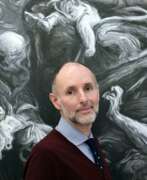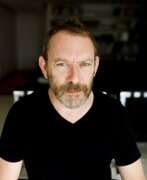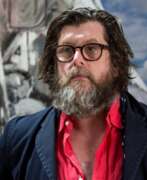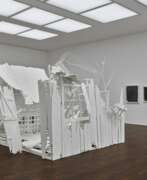Contemporary art Young British Artists


Dinos Chapman (born Konstantinos Chapman) is an English conceptual artist who almost always works with his younger brother Jake Chapman. Together they are known as Jake & Dinos Chapman and became famous as members of The Young British Artists, brainchild of media mogul and collector Charles Saatchi. The brothers usually create works using plastic models or fibreglass mannequins, which often cause scandal.


Jake Chapman, born Iakovos Chapman, is an English conceptual artist who works almost exclusively with his older brother Dinos Chapman. Together they are known as Jake & Dinos Chapman and became famous as members of the Young British Artists, brainchild of media mogul and collector Charles Saatchi. The brothers usually create works using plastic models or fibreglass mannequins, which often cause scandal.


Ian Davenport is an English abstraction artist known for his intricate compositions of streams of colored paint flowing over surfaces. All of Davenport's work involves experimentation: he uses various industrial and domestic tools, including wind machines, hypodermic syringes, and watering cans, to manipulate the paint and to draw as much attention to the process of creating artwork as to the finished works themselves.


Douglas Gordon is a Scottish artist. He won the Turner Prize in 1996, the Premio 2000 at the 47th Venice Biennale in 1997 and the Hugo Boss Prize in 1998. He lives and works in Berlin, Germany.
Much of Gordon's work is seen as being about memory and uses repetition in various forms. He uses material from the public realm and also creates performance-based videos. His work often overturns traditional uses of video by playing with time elements and employing multiple monitors.


Damien Hirst is a seminal figure in contemporary art, well-known for his provocative and often controversial works that explore themes of death, rebirth, and the boundaries of art itself. As a leading member of the Young British Artists (YBAs) in the 1990s, Hirst catapulted to fame with his innovative approach to art that combines the techniques of installation, sculpture, and painting.
Damien Hirst's early career was marked by his organization of the pivotal "Freeze" exhibition in 1988, showcasing his and his peers' work, which caught the attention of influential art collectors. This period laid the groundwork for his signature works, including the 'Natural History' series, where animals such as sharks, sheep, and cows are preserved in formaldehyde, challenging viewers to confront the nature of existence and the inevitability of death.
Among Damien Hirst's most iconic pieces is "The Physical Impossibility of Death in the Mind of Someone Living," featuring a tiger shark suspended in formaldehyde, and "For the Love of God," a platinum cast of an 18th-century human skull encrusted with 8,601 flawless diamonds. These works exemplify Hirst's exploration of mortality and the commodification of art.
Damien Hirst's 'Spot Paintings' and 'Spin Paintings' further demonstrate his challenge to traditional notions of authorship and the creative process, often involving teams of assistants in their production. These series play with concepts of randomness, control, and the aesthetic joys of color and form, pushing the boundaries of painting as a medium.
In 2017, Hirst embarked on "Treasures from the Wreck of the Unbelievable," an ambitious project that filled Venetian museums with artifacts from a fictional ancient shipwreck. This project, blending reality and fiction, invited audiences to question the authenticity and value of art, showcasing Hirst's ongoing interest in storytelling and myth-making within the context of contemporary culture.
For collectors and experts in art and antiques, Damien Hirst represents a pivotal figure whose works challenge, provoke, and inspire. His ability to blur the lines between art, science, and commerce has left an indelible mark on the art world, making his pieces highly sought after by collectors around the globe.
Stay updated on Damien Hirst's latest projects, exhibitions, and sales by signing up for dedicated art newsletters. This subscription will ensure you're informed about new opportunities to engage with the work of one of the most influential artists of our time.
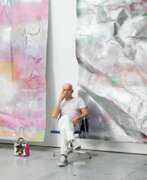

Marc Quinn is a contemporary English painter and sculptor, a member of the Young British Artists, a group that has dominated the art scene since the 1990s. He is known for his experimental approach to creativity and for incorporating shocking elements into his work.
Quinn declares to explore extreme aspects of the human body in his art. He experiments with a variety of materials including organic matter such as blood, bread and flowers, as well as marble, concrete and stainless steel. His portfolio includes sculptures, portraits, installations, graffiti and paintings
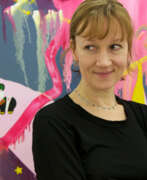

Fiona Rae is a Hong Kong-born British artist. She is one of the Young British Artists (YBAs) who rose to prominence in the 1990s. Throughout her career, she has been known for having a portfolio of work that includes elements of energy, and complexity. Her work is known for aiming at expanding the modern traditions of painting.
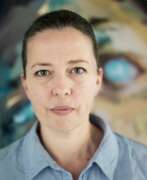

Jennifer Anne Saville is a contemporary British painter and an original member of the Young British Artists. Saville works and lives in Oxford, England and she is known for her large-scale painted depictions of nude women. Saville has been credited with originating a new and challenging method of painting the female nude and reinventing figure painting for contemporary art.
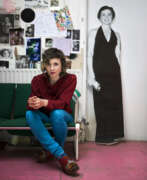

Georgina Starr is a British artist known for her art installations.
She creates video, sound and large-scale installations with a focus on female identity, the otherworldly and her longstanding interest in the future aspects of experimental cinema. Over the course of her artistic career, Starr has created and demonstrated some pretty wild and fascinating video and audio works, performances and installations that have delighted and surprised audiences.
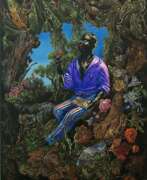

Mathew Weir is a British artist who belongs to the group of Young British Artists who defined the art culture of the 1990s. In his work, Weir combines images of ceramic figurines with his archive of landscapes, creating complex narratives with an exquisite yet melancholic aura.
